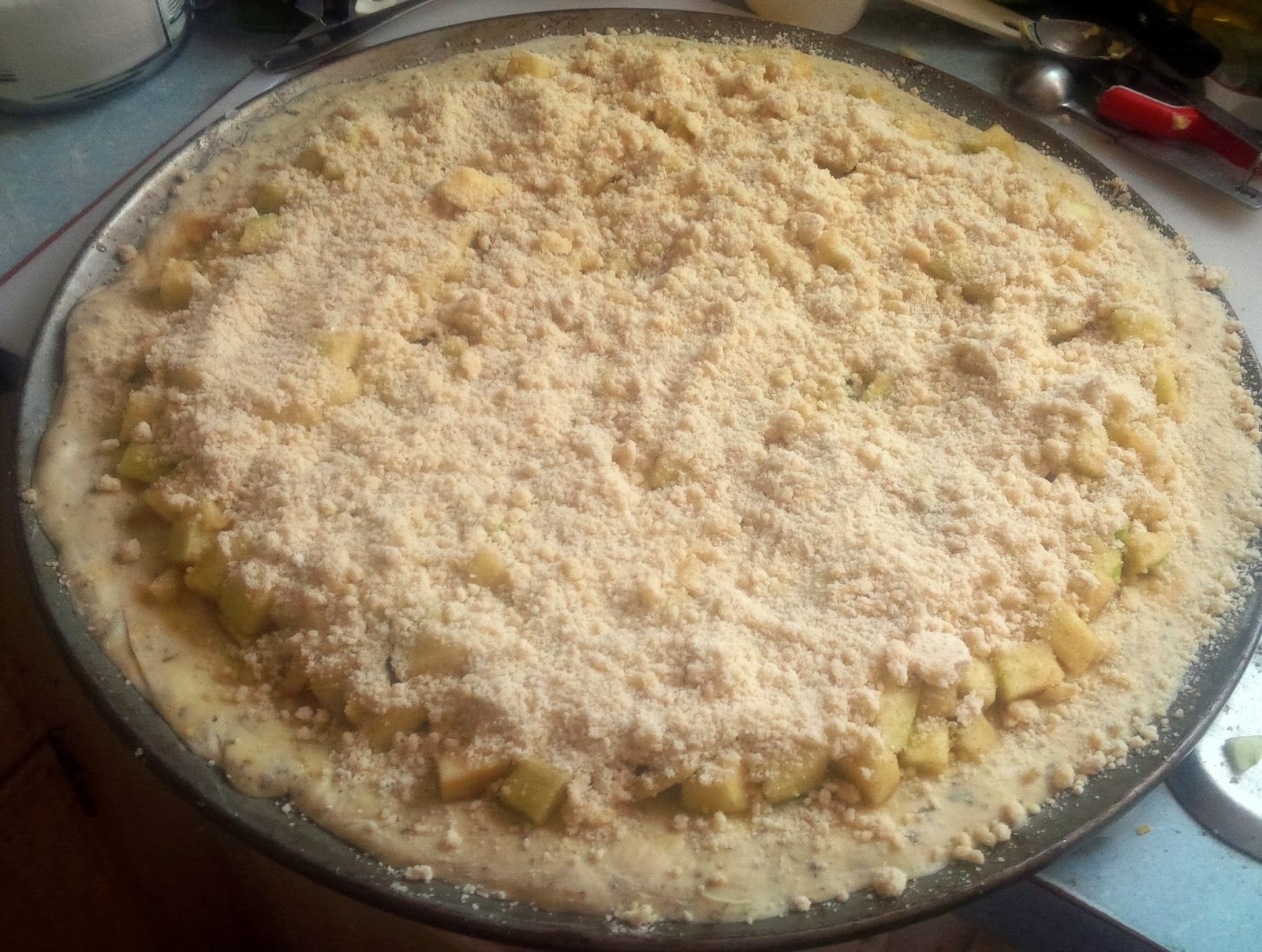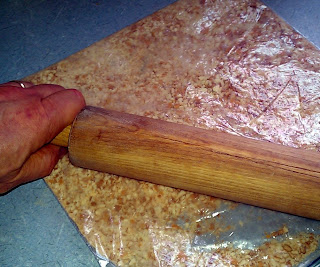To download a copy of the recipe for Smoked Barbecue Brisket, click HERE.
 During a recent trip to the southwest (Oklahoma and
Texas), I noticed that many of the touchstone moments involved food. This was especially
true for foods that were the real versions of the pale imitations we get here
in the northeast. Since having the burrito served at El Chico’s in Waco, Texas,
I haven’t had the New York version since, or wanted to.
During a recent trip to the southwest (Oklahoma and
Texas), I noticed that many of the touchstone moments involved food. This was especially
true for foods that were the real versions of the pale imitations we get here
in the northeast. Since having the burrito served at El Chico’s in Waco, Texas,
I haven’t had the New York version since, or wanted to.
 Another good example is
barbecue. In the northeast, barbecue usually consists of a meat cooked in
barbecue sauce, then covered with more sauce. The sauce is the star of the
show, and the meat is a supporting player. My first real barbecue (the brisket sandwich
at Rudy’s) showed me that the meat needs to be able to stand on its own flavor;
if it’s not independently delicious smoked meat with just a little bit of sauce for support,
it’s not barbecue. The brisket was the hero of the story; the sauce was its
trusty sidekick.
Another good example is
barbecue. In the northeast, barbecue usually consists of a meat cooked in
barbecue sauce, then covered with more sauce. The sauce is the star of the
show, and the meat is a supporting player. My first real barbecue (the brisket sandwich
at Rudy’s) showed me that the meat needs to be able to stand on its own flavor;
if it’s not independently delicious smoked meat with just a little bit of sauce for support,
it’s not barbecue. The brisket was the hero of the story; the sauce was its
trusty sidekick.
If the thought of smoking meat conjures images of
food television shows featuring smokers the size of tractor trailers being
operated by people whose days and nights are devoted to finding the perfect
wood combination, fear not. Small, stove-top smokers make this wonderful
cooking method available to home cooks like us. And while stove-top smokers
aren’t complete substitutes for the full size ones, they do a pretty good job
if you use them right. (See Cook’s Notes below for some comments on using the
stove-top smoker.)
Some Cook’s Notes before we begin to make our smoked
barbecue brisket:
- Portions of this recipe are adapted from Emeril Lagasse's “Texas-Style Smoked Brisket”.
- These instructions are based on a Camerons stove top smoker. Method for using other models may vary. Check the instructions. (If necessary, you can even use a search engine to find instructions on how to make your own.)
- Since smoking time in a stove-top smoker is usually less than for a full-size smoker, wood chips that work well in full size smokers may not work as well on the stove-top. Hickory and Mesquite are both good choices for a stove top smoker.
- Since the brisket requires very little attention while coming to room temperature, while smoking, and even while in the oven, this time can be used to prepare side your side dishes. (I served mine on fresh baked herbed rolls and with honey slaw on the side. You’ll find the herbed roll here and the honey slaw recipe here. (If you have any trouble downloading or copying the recipes, just send me a note and I’ll be happy to e-mail you a cookbook-style copy of either or both.)
This recipe makes about 4 servings.
Here’s what you’ll need:
- For the wet rub: 2 Tbsp brown sugar; 2 Tbsp paprika; 2 Tbsp salt; 1 Tbsp garlic powder; 1 Tbsp onion powder; 1 Tbsp black pepper; 1 Tbsp horseradish (prepared is ok, fresh-made is better); 1 Tbsp hot sauce; 1 Tbsp Worcestershire; and 2 tsp ground cumin.
- 2 lb beef brisket
- Barbecue sauce
- Other equipment needed: stove top smoker; 1-1/2 Tbsp wood chips (hickory or mesquite is recommended); cooking spray; meat thermometer.
First, we’ll make the rub and marinate the brisket:
In a bowl, thoroughly combine the rub ingredients.
Set the brisket on a sheet of plastic wrap and rub the mixture onto the brisket.
Wrap the brisket tightly in the plastic wrap. Place on a baking sheet and place in the refrigerator to marinate 6 to 8 hours.
When the brisket has finished marinating and you’re
ready to start smoking, prepare
the stove-top smoker as follows. (Also see Cook's Notes above.)
Cover the drip tray with foil, and place it on top of the wood chips inside the smoker base. Spray the wire rack with cooking spray, and place it on top of the drip tray. After the brisket has finished marinating, remove it from the refrigerator and, after letting it come to room temperature, place it on the wire rack.
With the lid slightly open, place the smoker on one burner of the stove over medium heat. When the first bit of smoke appears, close the lid and let the brisket smoke for 90 minutes.
After the smoking is complete, it’s time to complete the cooking process.
Remove the brisket from the smoker and wrap in aluminum foil. Place on a baking sheet and roast until tender and an instant-read thermometer registers an internal temperature of 185 to 195 degrees F., or until the meat is tender. This will probably take about two hours, but watch the temperature and give it whatever time it needs. Cook by temperature, not by time.
Remove the meat from the oven and let rest for 20 minutes. When the brisket has finished resting, trim the surface fat from the brisket. The fat is good for cooking, but not so good for serving.
Carve the meat against the grain.
To download a copy of the recipe for Smoked Barbecue Brisket, click HERE.
 All that’s
left is to add your sides and serve your brisket on a plate or as a sandwich
with a good barbeque sauce. (Cowboy hat or baseball cap with a reference to
something from the southwest is optional, but highly recommended.)
All that’s
left is to add your sides and serve your brisket on a plate or as a sandwich
with a good barbeque sauce. (Cowboy hat or baseball cap with a reference to
something from the southwest is optional, but highly recommended.)
Please visit again for the next next great-tasting, home-cook
friendly recipe post. (Spoiler alert: In the coming weeks, I’ll be posting the
recipe for a cool, refreshing summer dessert you’re going to think is just
peachy. Oops…have I said too much?) Till then, stay well, keep it about the
food, and always remember to kiss the cook. ;-)














































